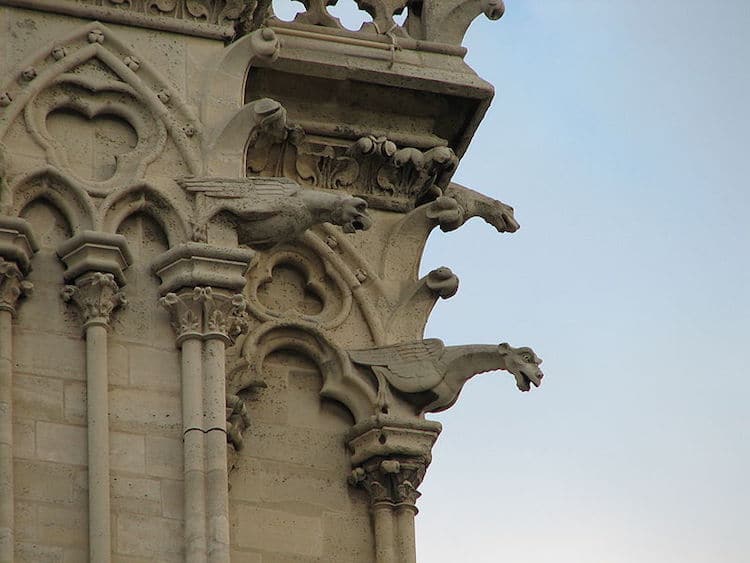
Photo: Milvus via Wikimedia Commons, CC BY-SA 3.0)
Fantastic and frightening, gargoyles have become one of the most distinctive features of Gothic architecture. Likely erected as a defense against demons, the stone statues are rooted in religion and steeped in superstition. While these looming figures can be found on the façades of most Medieval cathedrals, many of the protectors perched atop these buildings are not gargoyles at all—they’re grotesques.
While both types of Gothic sculpture are designed to scare, gargoyles also serve an architectural purpose: they double as waterspouts, catching and draining rainwater. These gurgling figures gained prominence in Medieval France, though earlier editions have existed in different cultures for centuries.
Here, we take a look at the history of the gargoyle, focusing on its unique function and tracing the way it has evolved over time.
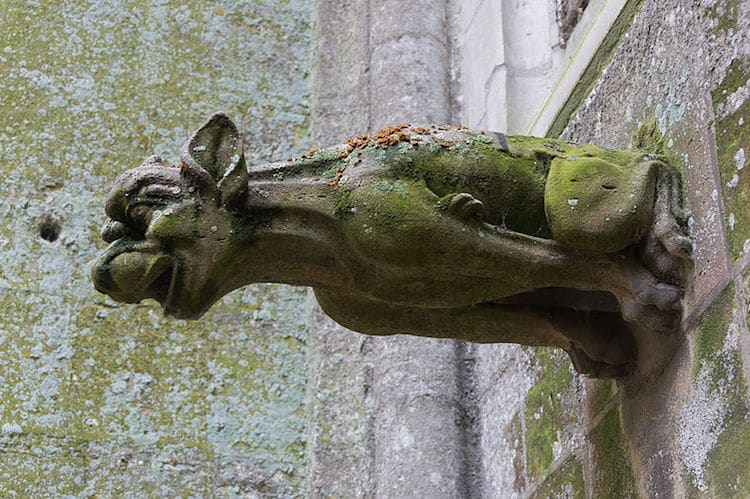
A gargoyle on the Cathedral of Bayeux in Normandy, France (Photo: Jebulon via Wikimedia Commons, CC0 1.0)
What is a Gargoyle?
A gargoyle is a grotesque that also acts as a drain-spout. In art history, a grotesque is any fanciful figure reminiscent of those found painted on the walls of grottoes—or cave-like ruins—in Ancient Rome. During the Gothic period, however, the term grotesque was used specifically to describe the peculiar sculptures found on churches, cathedrals, and other Catholic institutions.
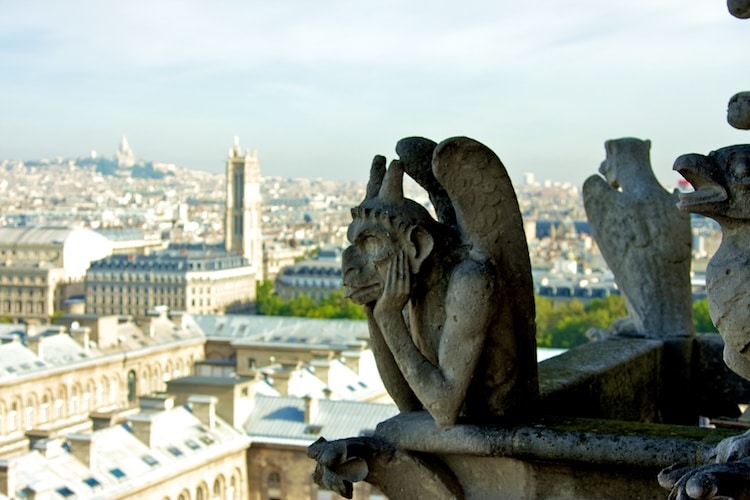
A grotesque perched atop Notre Dame Cathedral in Paris (Photo: Julian Fong via Wikimedia Commons, CC BY-SA 2.0)
Though they differ in function, both gargoyles and grotesques were intended to scare and protect. Thus, intimidating animals, exotic hybrids (called chimera), mythical creatures, and even unsettling humans are popular subjects across both types of sculpture—though some are more humorous than hair-raising.
How Do Gargoyles Work?
The word gargoyle, or gargouille, is derived from gorge, the French word for throat. This is because a true gargoyle has a hollow neck, attached at one side to the building’s gutter system. When it rains, water flows from the roof into the gutter, which leads the run-off into the gargoyle. The water passes through the pipe-like stone structure, and then dramatically cascades out of the creature’s open mouth.
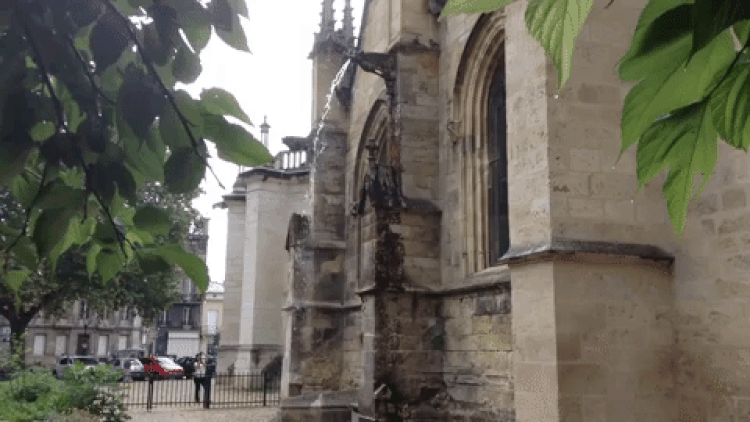
Photo: Four Seasons Mom via YouTube
Though theatrical, this fascinating phenomenon serves a more functional purpose. By directing rainwater away from the building, the gargoyle helps prevent damage to walls and the roof’s masonry, which, during the Gothic period, became increasingly elaborate. Thus, in order to move the water as far away from the façade as possible, gargoyles are typically horizontally-oriented, setting them apart from the upright grotesques.
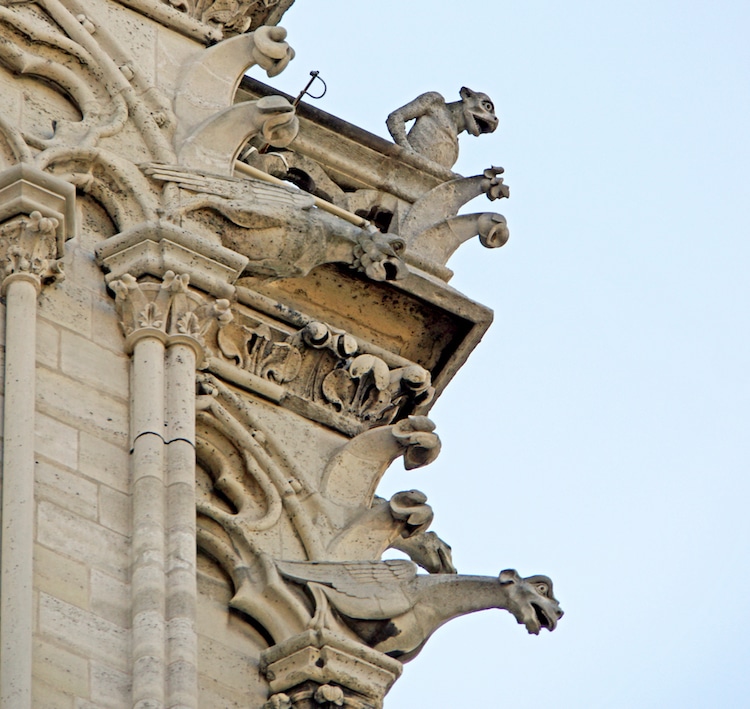
Grotesques and gargoyles on Notre Dame (Photo: Dennis Jarvis via Wikimedia Commons, CC BY-SA 2.0)
History
Ancient Cultures
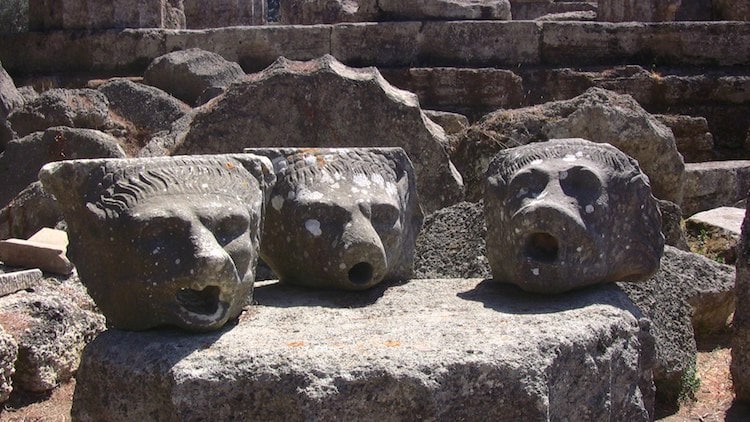
Lion-head gargoyle ruins at the Temple of Zeus (Photo: troy mckaskle via Wikimedia Commons, CC BY-SA 2.0)
Gargoyle-like structures were employed in ancient cultures, with the style and intention of these works varying according to period and place.
In ancient Egypt, gargoyles adorned the roofs of temples and took the form of lion heads. Unlike Gothic gargoyles, these sculptures did not exist to prevent water damage; instead, they were likely installed to keep the temples safe from the vengeful rains of Seth, a god associated with chaos.
Similarly, in ancient Rome and Greece, gargoyles inspired by mythological animals and chimera were carved into places of worship. Most notably, at the Temple of Zeus in Olympia, a collection of marble lion heads has served as spouts for centuries.
Gargoyles in Medieval Architecture
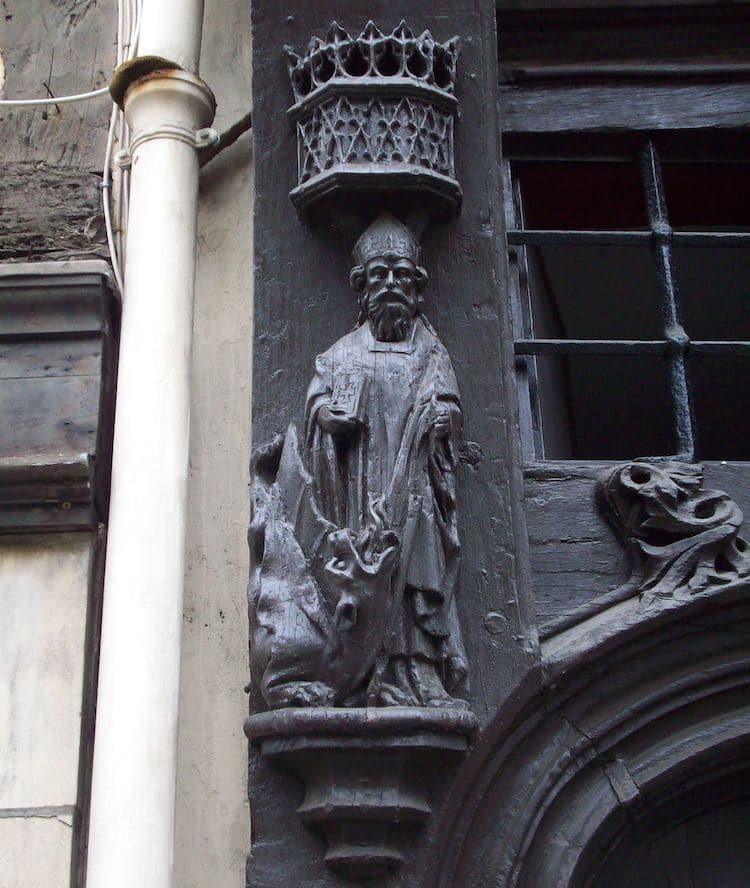
A statue of Saint Romain with La Gargouille at his feet (Photo: Giogo via Wikimedia Commons, CC BY-SA 3.0)
Undoubtedly influenced by these age-old examples, architects began incorporating gargoyles into their designs during the Middle Ages. On top of these ancient models, Gothic gargoyles were also inspired by French folklore.
According to legend, Saint Romain—the bishop of Rouen in the 7th century—saved townspeople from the terror of a fire-breathing beast named La Gargouille. Though the monster was captured by Romain and burned at the stake, its head and neck mysteriously remained intact. Romain decided to nail the creature’s severed head to the church, where it served as a waterspout—and a terrifying trophy—for years to come.
Famous Medieval Cathedrals with Gargoyles
Laon Cathedral (completed 1230)
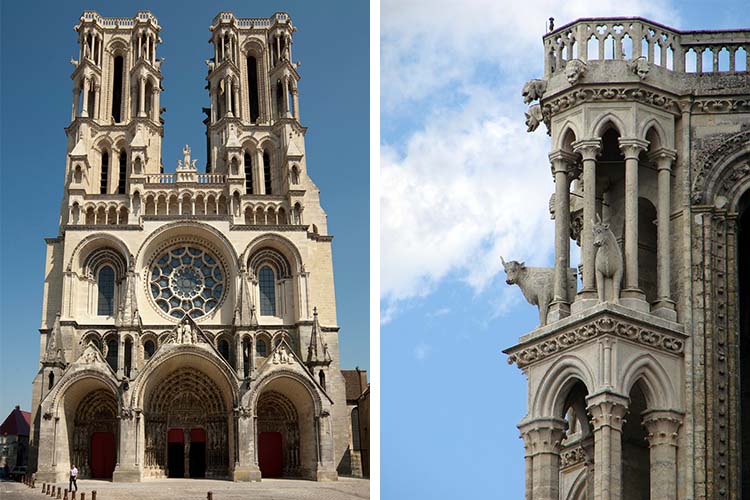
Left: Exterior of Laon Cathedral, Laon, France (Photo: PMRMaeyaert via Wikimedia Commons, CC BY-SA 3.0)
Right: Detail of Laon Cathedral gargoyles, Laon, France (Photo: Vassil via Wikimedia Commons, Public domain)
Completed in 1230, the Laon Cathedral is believed to contain the earliest examples of medieval gargoyles, which can be seen along the highest points of the structure.
Notre-Dame (completed 1345)
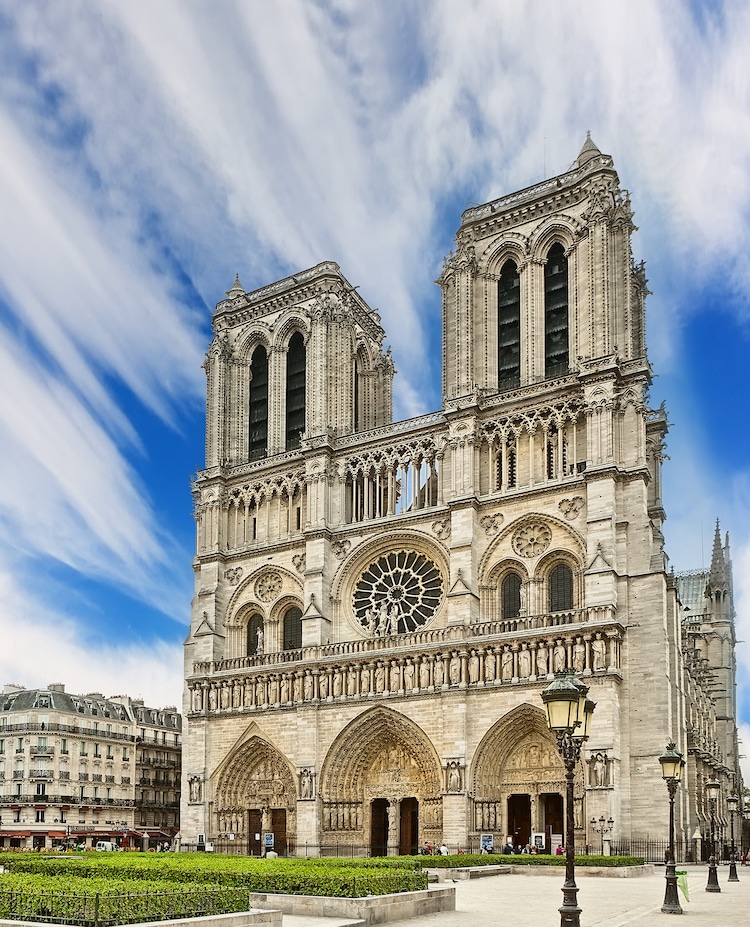
Notre-Dame Cathedral, Paris, France (Photo: WDGPhoto/Depositphotos)
As the seat of the city’s archbishop, Notre-Dame is Paris’ premier Catholic Church. It features some of the most famous examples of medieval gargoyles and chimeras in French Gothic architecture, in addition to other key features of this style like spires and stained glass windows.
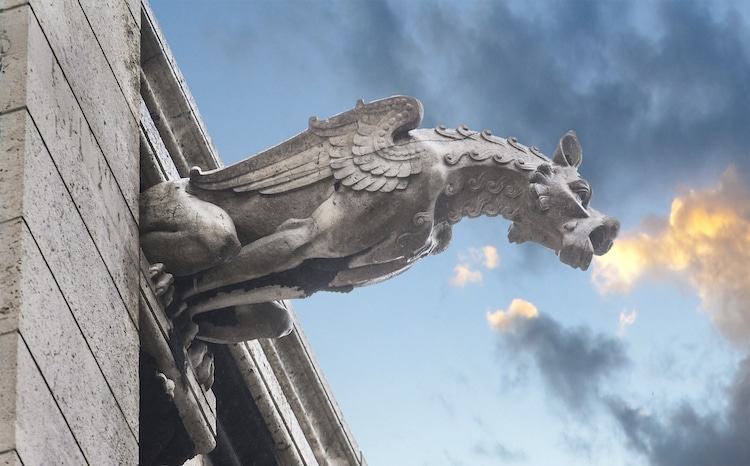
Gargoyle on the Notre-Dame Cathedral, Paris, France (Photo: Sonar/Depositphotos)
Gargoyles Today

Photo: Krzysztof Mizera via Wikimedia Commons, CC BY-SA 4.0)
Today, gargoyles are celebrated for their clever engineering and distinctively Gothic appearance. Though often confused with grotesques, the gargoyle remains one of the most popular sculptures and awe-inspiring architectural elements of Medieval Europe.
This article has been edited and updated.
Related Articles:
Exploring the Extravagance and Drama of Baroque Art and Architecture
These Drawings of Europe’s Most Beautiful Churches Are Tiny But Packed With Details
16th Century Gothic Boxwood Miniatures With Extremely Detailed Carvings
How Marble Sculptures Have Inspired Artists and Captivated Audiences for Millenia
